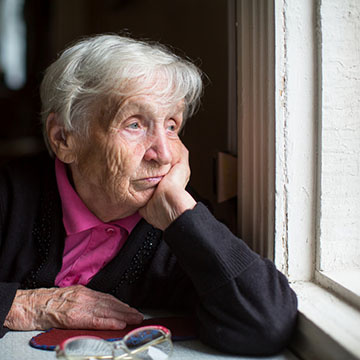Social Isolation — The Hidden Cost of Social Distancing

Leaders across the country are taking actions that intrude on our daily lives like we’ve never seen before. Curfews, forced closure of businesses and public spaces, guidance to avoid congregating in any groups of greater than 10 people. It’s going to ramp up before it ramps down. These bold actions are intended to save lives by slowing the spread of coronavirus — to help “flatten the curve” — and prevent the American medical system from buckling under unprecedented demand. The public health logic is sound. But these actions are not without consequences. They raise the risk of another epidemic: loneliness.
Worrying about a “knock on” effect like loneliness may seem like small potatoes compared to the threat of a pandemic, but studies have shown the significant physical effects that loneliness can have, including reduced immune responses, inflammation, and the exacerbation of conditions like high blood pressure, heart disease, asthma, and diabetes. Older adults are already at a high risk for loneliness-associated complications, and quarantines and curfews stand to increase those risks.
“The brunt of COVID-19 will be borne by the poor, elderly, and sick, and it is up to us to ensure they are not left behind,” said former U.S. Surgeon General Vivek Murthy in a recent article in Vox.
But there’s good news: There is a way to both honor the public health call for more social distance and also protect people from the unwanted effects of loneliness. It starts with remembering that “social distance” really means “physical distance,” not socially isolating people from interaction.
Everyone can play a part in addressing loneliness, especially those of us who work in the medical field. My father, ChenMed founder James Chen, has long said appointments are as important for his patients psychologically as they are clinically. “Going to the doctor” may not sound like a social highlight for the young, but for a lot of elderly patients, it’s an opportunity to interact with someone who genuinely cares about them. Older patients also appreciate the opportunity to leave home for a familiar setting and seeing people that they know and trust. The opportunity now, as we limit non-acute visits, is to find a way to deliver this level of care and comfort in a way that keeps our patients happy, healthy, and home.
Our focus now is making virtual care feel like ultra high-touch virtual care. Beginning this week, more than half of our in-person visits with patients will take place remotely. This is a new reality for us, and frankly, the opposite of our brand promise of “high touch, in-person care,” but we are adapting to a new reality. Should some of our markets experience more severe quarantine and curfew measures, we’re preparing to move as much as 90 percent of our appointment load to virtual platforms, reserving in-person appointments only for those who absolutely require physical care and who remain safer at a doctor’s office than an emergency room. We will even bring back that sepia-toned relic of medical history — the house call — when the situation requires.
During these non office-based interactions, we’re asking all of our providers to be intentional in asking questions that can give indicators about a patient’s state of mind. Many older patients will say they’re fine, answering something like, “My son taught me how to get on Netflix and I’m catching up on old shows.” But many will wave a subtle red flag, saying something like, “I’m bored. I don’t feel well.” It’s imperative that we, as primary care physicians, are as sensitive to these symptoms of mental distress as we are to reports of a cough or a fever.
We’re constantly looking for ways we can involve every member of the office — from our physicians to our case managers to our support staff members — in keeping our patients safe and engaged. The work to combat loneliness may happen from our medical clinics turned “call centers”; for example, making additional check-in calls to patients between each virtual visit. Or it may happen outside of our buildings. What comes next could be anything — delivering medications, picking up groceries, or maybe even walking a dog or two — whatever it takes, within the law, to keep the patient happy, healthy, and at home.
One of the best things about taking actions to help patients thrive at home: You don’t need a medical degree to do most of them. We all face tremendous uncertainty in the coming weeks and even months. We all must follow the directions to limit public life for now so we can slow the spread of the coronavirus, but also step up to mitigate the knock-on effects like loneliness that our preventive measures may exacerbate. Please remember the old, the frail, the sick, and the vulnerable during this time of need. You too can do your part by helping your friends, parents, or a relative get on FaceTime, Alexa or something that lets them video chat on a regular basis. Small things like this may very well save their life.




